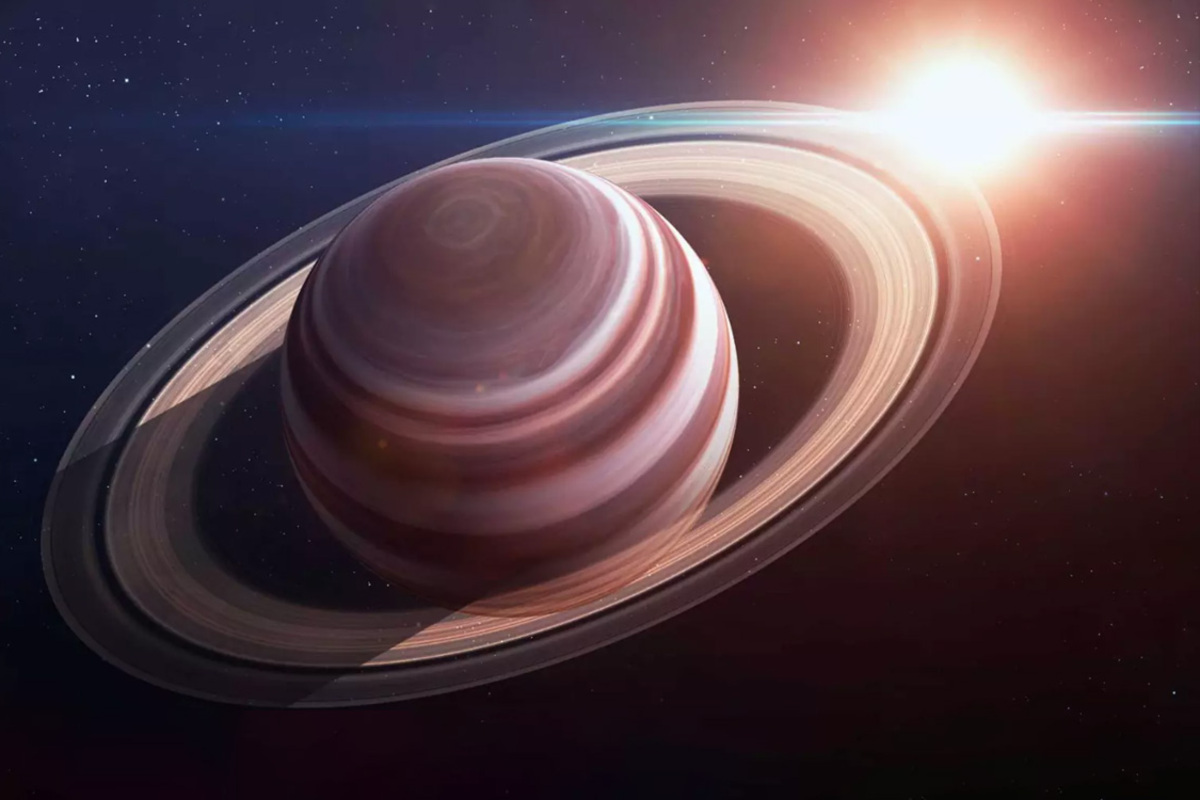Saturn is one of the most fascinating and visually stunning planets in the Solar System. Its iconic rings and mysterious structure have long captivated scientists and astronomy enthusiasts alike. While it has been studied for decades, Saturn still holds many secrets. This gas giant is more than just a beautiful object in the night sky — it is a cosmic laboratory that offers deep insights into the workings of our universe. Here are some incredible facts about Saturn that you may not know.
- Saturn is the second-largest planet in the Solar System, surpassed only by Jupiter. Its diameter exceeds 120,000 kilometers, making it over nine times wider than Earth. Due to its extremely low density, Saturn could float in a large enough body of water, making it the only planet with such a property.
- Saturn’s famous rings are made up of billions of particles of ice, dust, and rock. Their thickness ranges from just a few dozen meters to several kilometers, while their width spans hundreds of thousands of kilometers. Despite their vast extent, the rings are surprisingly thin.
- The planet has at least 146 confirmed moons, and new ones are being discovered regularly. The largest, Titan, is even bigger than Mercury and has a dense atmosphere. It is the only known moon with stable bodies of liquid — lakes and seas of methane and ethane — on its surface.
- Saturn rotates extremely fast, completing one full spin in about 10.5 hours. This rapid rotation causes the planet to bulge at the equator and flatten at the poles. It has the most pronounced oblate shape of any planet in the Solar System.
- Its atmosphere consists mostly of hydrogen and helium, but also contains ammonia, methane, and water vapor. The upper layers of Saturn’s atmosphere reach temperatures as low as –180 degrees Celsius. The planet features complex cloud patterns and storm systems, similar to those on Jupiter.
- In Saturn’s northern hemisphere, there is a massive hexagon-shaped cloud formation. This unique structure spans over 25,000 kilometers in diameter and rotates in sync with the planet. The exact cause of the hexagon remains a mystery to scientists.
- The Cassini spacecraft, which operated from 1997 to 2017, provided the most comprehensive data on Saturn and its moons. It orbited the planet for 13 years and performed hundreds of close flybys. Among its discoveries was evidence of geothermal activity on the moon Enceladus.
- Enceladus ejects jets of water vapor from beneath its icy crust. This indicates the presence of a subsurface ocean, which may provide conditions suitable for life. The material from these plumes contributes to Saturn’s E ring.
- Saturn’s rings are not permanent and may disappear within a few hundred million years. They are slowly eroding due to solar radiation and gravitational interactions. We are fortunate to observe them during this rare and beautiful phase of the planet’s life.
- The planet’s magnetosphere features auroras similar to Earth’s northern and southern lights. These occur when solar wind particles interact with Saturn’s magnetic field. The resulting glow often appears in shades of blue and violet.
- Saturn has its own magnetic field, although it is weaker than Jupiter’s. Uniquely, its magnetic axis almost perfectly aligns with its rotational axis. This feature makes Saturn’s magnetosphere particularly interesting to study.
- Temperatures deep within Saturn can reach over 11,000 degrees Celsius. The planet emits nearly twice as much energy as it receives from the Sun due to gravitational compression. This internal heat influences atmospheric dynamics on a global scale.
- Saturn lacks a solid surface — it is a gas giant composed mainly of hydrogen and helium. As one descends into the atmosphere, pressure and temperature increase until hydrogen becomes liquid or even metallic. The planet’s core is believed to consist of rock and metal.
- The gravitational influence of Saturn affects the orbits of asteroids and even other planets. It plays a key role in maintaining orbital resonances and the overall stability of the Solar System. This makes Saturn a crucial component in the gravitational architecture of our planetary neighborhood.
- In 2020, astronomers confirmed that Saturn has more moons than Jupiter. Some of these moons have retrograde orbits, suggesting they were captured by Saturn’s gravity. This reveals the dynamic and complex history of Saturn’s satellite system.
- Saturn experiences seasonal changes, though they unfold over long periods. A single year on Saturn lasts about 29 Earth years, meaning each season spans more than seven Earth years. These extended seasons allow scientists to observe long-term atmospheric patterns.
Saturn is not just a magnificent celestial object but also a profound mystery that continues to challenge our understanding of space. These interesting facts reveal the planet’s complexity and uniqueness among its Solar System counterparts. You may not have known how dynamic and diverse Saturn truly is, or how many discoveries still await us. Fascinating facts about Saturn inspire curiosity and encourage further exploration of our cosmic surroundings.





